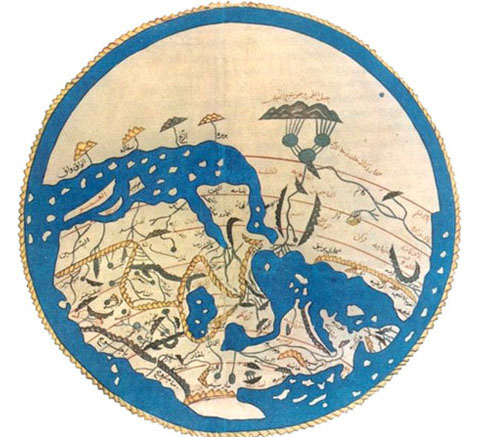Article of the Month - November 2022
“Religiously Mixed Families in the Mediterranean Society of the Cairo Geniza,”
(Moshe Yagur: The Martin Buber Society of Fellows in the Humanities and Social Sciences, The Hebrew University of Jerusalem)
Moshe Yagur, “Religiously mixed families in the Mediterranean society of the Cairo Geniza,”
Mediterranean Historical Review (2020) 35,1: 27–42.
Keywords: Medieval Mediterranean • Medieval Egypt and the Levant • Middle East Studies • Jewish History • Religious Conversion • Identity • Cairo Geniza • Marriage • Jewish-Muslim relations
Publisher’s Abstract:
Documents of various genres from the Cairo Geniza from the eleventh to thirteenth centuries, as well as contemporary legal queries to rabbinic figures, attest to the phenomenon of mixed-faith families among the Jewish communities of the Islamic Mediterranean. In most of these cases known to us, the husbands were Jewish apostates, probably converts to Islam, while their wives remained loyal to Judaism. This social reality was enabled by the legal feasibility of such marriages in both Jewish and Islamic law, as well as the general tendency in the Jewish communities under Islam to maintain social, professional, and familial contacts with apostates from Judaism. This laxity eased the social effects of conversion, and even left the door open for a possible later return of the apostate into the Jewish fold. The existence of religiously mixed families also meant that children of such families found themselves in a unique liminal position, torn between two religions. These children were encouraged by family and community members to embrace Jewish identity despite the conversion of one of their parents; the same was true even of children of couples who had both converted.
Nomination Statement:
This short but original article examines religiously-mixed marriages (Jewish-Muslim) as they appear in the documents of the Cairo geniza. The study centers on a number of responsa involving marriages between Jews and apostates, and situates the phenomenon in a Mediterranean frame. Particularly interesting is the asymmetrical views of Jewish and Muslim jurists regarding apostasy, which suggests that the borders between religious communities were more porous than have typically been assumed.
Authors’ Comment:
This article developed out of the research I conducted as part of my doctoral studies at the Hebrew University, which dealt with conversion to and from Judaism in Fatimid and Ayyubid Egypt, and as a research fellow at the Center for the Study of Conversion at Ben Gurion University of the Negev. While examining the issue I realized that we can say much more about the ongoing ties of apostates and their Jewish former co-religionists than about the severance of those ties. It turned out that these ties were not only formal or practical, but could also include marriage and children. The children of such 'mixed faith' marriages between Jewish apostate husbands and their Jewish wives can be seen as the personification of the much larger social situation of ongoing, multi-layered interactions between members of different faiths in the Islamic Medieval Mediterranean.
Understanding the existence of mixed households, on the one hand, and the larger social context that enabled this existence, on the other hand, has led me to my current research project, which examines the spatial reality of mixed or shared dwelling of Jews, Muslims and Christians in the urban centers of Egypt and Greater Syria during the Middle Ages. I seek to document this reality and analyze the private sphere and the residential quarters - as opposed to the market or the palace - as an arena for mundane inter-religious encounters. A bit more on this can be found here.
Would you like to discuss this article?
Start a thread on the Mediterranean Seminar list-server
See the other Articles of the Month here.
